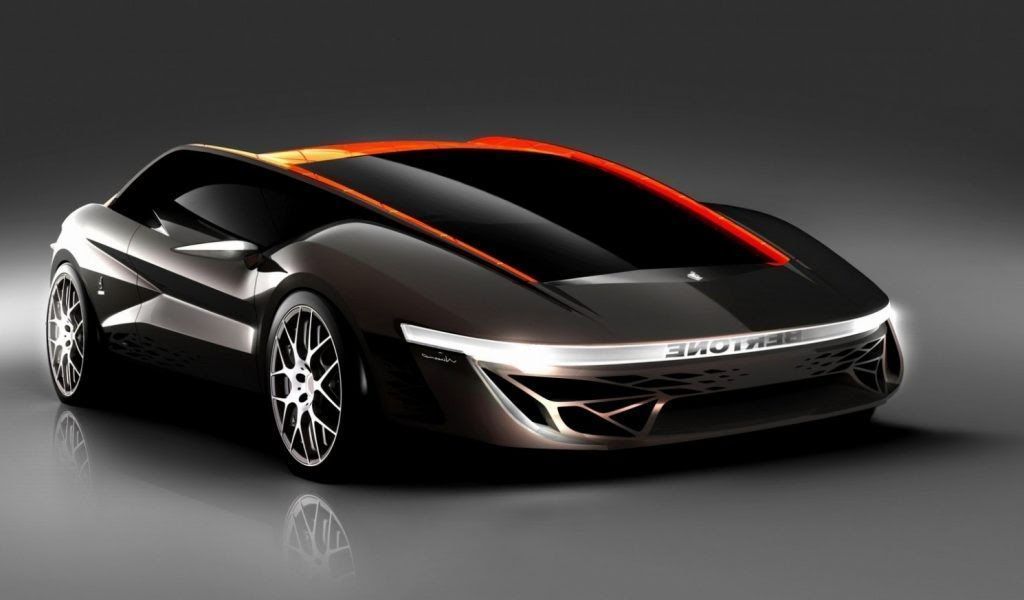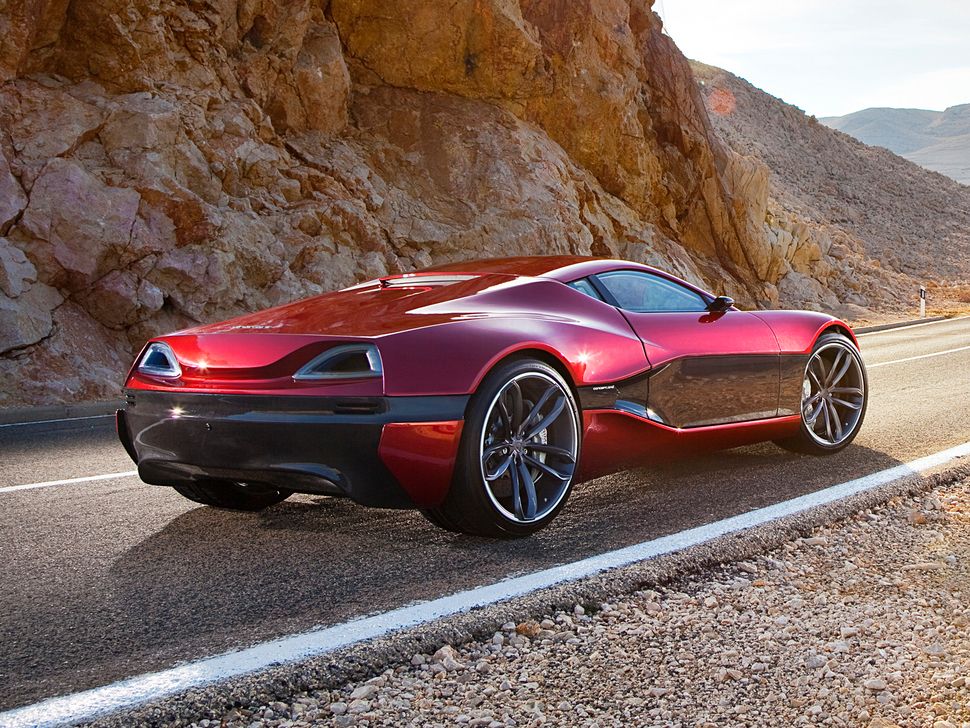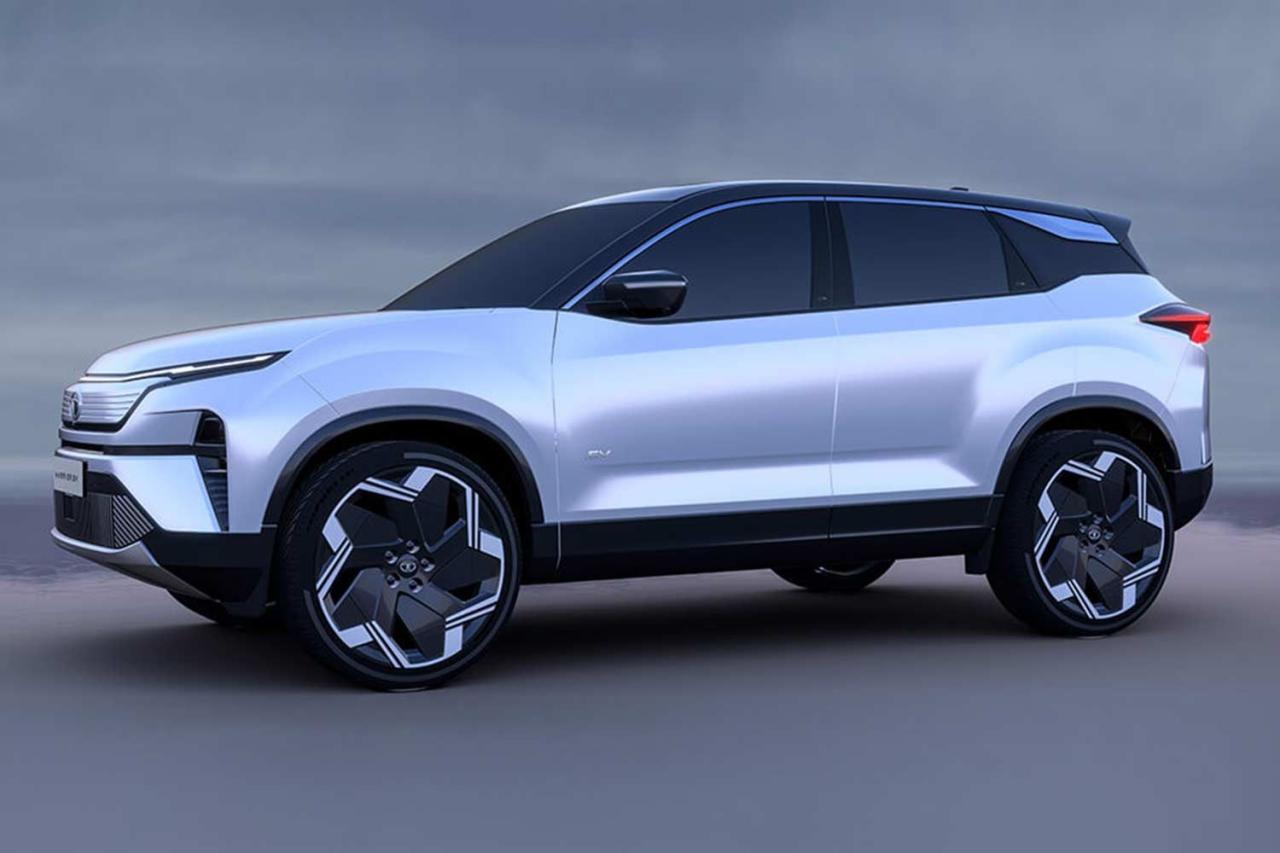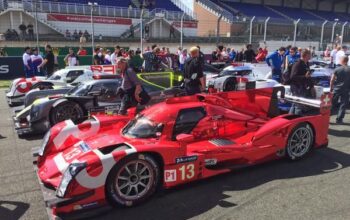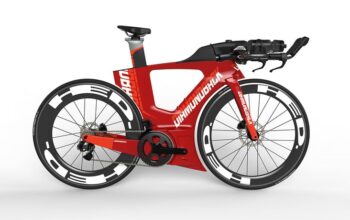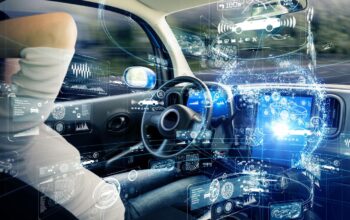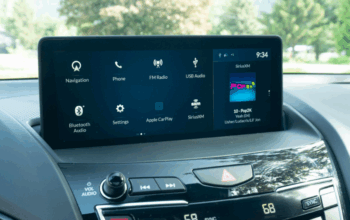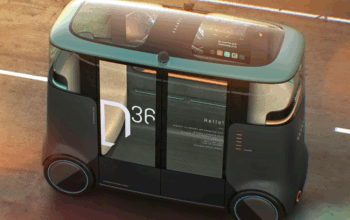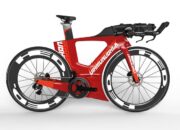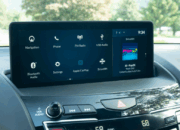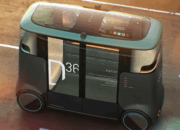In the ever-evolving world of automotive design and engineering, certain names resonate with unparalleled authority and reverence. These are the iconic brands, manufacturers whose legacies are built on decades, sometimes even centuries, of innovation, performance, and an unwavering commitment to excellence. While the automotive landscape is frequently punctuated by new entrants and emerging technologies, it is often the established titans that capture the most attention when they embark on a journey to redefine themselves. The launch of a bold new model from such a brand is more than just an addition to a product lineup; it’s a statement, a reaffirmation of their pioneering spirit, and a glimpse into the future of mobility. This article delves into how these storied marques are challenging conventions, embracing electrification, pushing the boundaries of performance, and meticulously crafting designs that set new benchmarks, all while preserving the essence of their celebrated heritage.
The Weight of Heritage: A Double-Edged Sword
For an iconic automotive brand, heritage is both a profound asset and a significant challenge. On one hand, it bestows:
A. Unwavering brand loyalty: Generations of enthusiasts and customers who trust the name and its promise of quality. B. Recognizable design language: Distinctive cues that instantly identify a vehicle as belonging to a particular marque, fostering emotional connection. C. A rich narrative: Stories of legendary races, groundbreaking engineering feats, and influential figures that add depth and mystique.
However, this very heritage can also be a formidable hurdle. The pressure to innovate while respecting tradition, to embrace the future without alienating a loyal past, is immense. When launching a truly bold model, these brands must navigate a delicate balance:
A. Evolving without alienating: Introducing radical new elements while ensuring the vehicle still feels authentically “them.” B. Meeting modern demands: Integrating advanced technology, sustainability, and connectivity without compromising core brand values. C. Setting new benchmarks: Not just keeping pace with competitors, but defining the next era of automotive excellence.
The recent spate of audacious model launches demonstrates that these iconic brands are not merely resting on their laurels; they are actively shaping the future, leveraging their foundational strengths to embark on truly daring ventures.
Electrification: The Boldest Leap Yet
Perhaps the most significant and transformative shift for iconic brands is their decisive embrace of electrification. For manufacturers steeped in the roar of internal combustion engines, the transition to silent, battery-powered vehicles represents a monumental leap, challenging decades of engineering philosophy and customer expectation. Yet, they are not just participating; they are leading with audacious designs and performance metrics that redefine what an electric vehicle (EV) can be.
A. Reimagining Performance Without Pistons
Brands renowned for raw power and exhilarating speed face a unique challenge: how to translate their performance DNA into an electric format. The answer lies in leveraging the inherent advantages of electric powertrains: instant torque, precise power delivery, and lower centers of gravity.
- Porsche Taycan: This was a watershed moment. Porsche, synonymous with flat-six engines and track prowess, delivered an electric sports car that retains the thrilling driving dynamics expected from Zuffenhausen. Its rapid acceleration, sophisticated chassis, and unmistakable Porsche design language proved that electrification could enhance rather than diminish performance. The Taycan’s success paved the way for other high-performance electric models, demonstrating that speed and handling could transcend the need for a gasoline engine.
- Mercedes-AMG EQS: Mercedes-AMG, known for its powerful V8s, launched an electric sedan that delivers astounding horsepower and torque figures, coupled with a luxurious and tech-laden interior. It showcases how luxury performance brands can leverage electric platforms to create vehicles that are both blisteringly fast and exquisitely refined, setting new standards for electric luxury.
- Lotus Evija: A pure electric hypercar from a brand historically focused on lightweighting and handling. The Evija’s mind-boggling power output and aerodynamic design demonstrate the extreme potential of electric powertrains when pushed to their limits, proving that even the most performance-centric brands can find their electrified stride.
These launches are not merely about slapping a battery into an existing shell; they represent fundamental re-engineering to ensure that the electric models deliver the visceral experience and performance credentials expected from their lineage.
B. Crafting an Electric Identity
Beyond performance, iconic brands are grappling with how to visually represent their electric future. Without grilles for cooling or exhaust pipes, traditional design cues must be rethought.
- BMW iX: A radical departure from BMW’s traditional SUV aesthetic, the iX embraces a futuristic, minimalist design, emphasizing space and sustainable materials within. Its controversial styling signals BMW’s intent to forge a distinct electric identity, challenging perceptions while retaining BMW’s core driving dynamics.
- Audi e-tron GT: Maintaining Audi’s sleek, sophisticated lines, the e-tron GT seamlessly integrates electric vehicle proportions into a classic grand tourer silhouette. It demonstrates how an iconic brand can evolve its design language for electrification without resorting to radical, jarring changes, appealing to those who desire a familiar yet futuristic aesthetic.
- Rolls-Royce Spectre: The brand’s first all-electric car, the Spectre, retains the unmistakable presence and opulent luxury of a Rolls-Royce, proving that even the pinnacle of automotive excess can transition to an electric powertrain without compromise. Its design is evolutionary, ensuring it is immediately recognizable as a Rolls-Royce, while subtly hinting at its electric heart.
These examples illustrate the diverse approaches iconic brands are taking to define their electric persona, balancing innovation with the preservation of their distinctive visual heritage.
Design Reimagined: Blending Legacy with Innovation
Design is often the first touchpoint, the silent ambassador of a brand’s philosophy. For iconic marques, every line, curve, and proportion must speak volumes about their past while hinting at the future. Bold model launches are opportunities to push these boundaries.
A. Evolutionary vs. Revolutionary Aesthetics
Some brands opt for an evolutionary approach, subtly refining their classic lines for a modern era, while others embrace a more revolutionary aesthetic.
- Mercedes-Benz SL: The latest iteration of the legendary SL roadster reinterprets its classic proportions with a modern, aggressive stance. It’s a return to its sporting roots, blending a long hood and short deck with contemporary Mercedes-AMG design language, creating a visually stunning convertible that respects its heritage while looking firmly to the future.
- Land Rover Defender: The re-imagination of the Defender was a monumental task, given its cult status. The new model successfully blends its utilitarian, boxy silhouette with modern design elements, premium materials, and sophisticated technology. It’s a testament to how an iconic, rugged design can be updated for contemporary demands without losing its essence, appealing to both traditionalists and new buyers.
- Chevrolet Corvette C8: The shift to a mid-engine layout for the Corvette was perhaps the most radical design change in its history. This fundamental architectural shift allowed for supercar proportions and enhanced performance, completely redefining what a Corvette looks like and how it drives. It was a bold gamble that paid off, attracting a new generation of enthusiasts while still captivating its loyal fanbase.
These examples highlight the strategic decisions brands make regarding how much to deviate from established visual norms, always aiming to resonate with their core identity while attracting new demographics.
B. Interior as a Digital Sanctuary
Modern luxury and performance vehicles are defined as much by their interiors as by their exteriors. Iconic brands are transforming cabins into sophisticated digital sanctuaries, blending traditional craftsmanship with cutting-edge technology.
- Integrated Screens: Gone are the days of small, disjointed displays. New models feature expansive, high-resolution screens that seamlessly integrate into the dashboard, providing intuitive control over infotainment, navigation, and vehicle settings. Examples include Mercedes-Benz’s Hyperscreen and BMW’s Curved Display.
- Sustainable Materials: Beyond leather and wood, there’s a growing emphasis on sustainable and innovative materials like recycled plastics, vegan leathers, open-pore wood, and unique fabric textures. This reflects a broader industry trend towards environmental consciousness and offers new avenues for interior personalization and luxury.
- Ergonomics and Haptics: While touchscreens are prevalent, brands are carefully integrating physical controls for critical functions, or utilizing haptic feedback to provide a tactile sense of interaction, ensuring that the driver remains connected to the driving experience.
- Ambient Lighting: Sophisticated ambient lighting systems allow for personalized interior moods, enhancing comfort and luxury, often reacting to drive modes or music.
These interior advancements are crucial for attracting discerning customers who expect a holistic, immersive, and highly connected experience within their vehicles.
Pushing Performance Boundaries
For many iconic brands, performance is not merely a feature; it’s their raison d’être. Bold new models are opportunities to redefine what’s possible, whether through brute force, advanced aerodynamics, or sophisticated chassis engineering.
A. The Pursuit of Speed and Agility
Even as electrification takes hold, the quest for ultimate speed and agility remains.
- Ferrari SF90 Stradale: As Ferrari’s first series-production plug-in hybrid, the SF90 combines a V8 engine with three electric motors to deliver an astounding 1000 horsepower. It represents a bold step into hybridization for the brand, proving that electrification can augment, rather than dilute, the visceral Ferrari experience, achieving unparalleled performance figures.
- Lamborghini Revuelto: Succeeding the Aventador, the Revuelto continues Lamborghini’s legacy of dramatic V12 power, now augmented by hybrid technology. Its design is unmistakably Lamborghini, aggressive and futuristic, while its performance is designed to set new benchmarks for hybrid supercars, showcasing how an iconic brand embraces new tech without compromising its core identity.
- Aston Martin Valhalla: A mid-engined plug-in hybrid supercar, the Valhalla aims to bring Formula 1 technology to the road. It embodies Aston Martin’s desire to compete at the very pinnacle of performance, combining a bespoke V8 engine with electric motors for explosive power and track-focused dynamics, signaling a new era for the British marque.
These vehicles are not just fast; they are engineering marvels, demonstrating how iconic brands leverage cutting-edge technology to redefine automotive performance.
B. Aerodynamics and Lightweighting
Performance extends beyond raw horsepower. Sophisticated aerodynamics and lightweight construction are crucial for agility, efficiency, and ultimate speed.
- Active Aerodynamics: Many new performance models feature active aerodynamic elements (e.g., movable spoilers, diffusers, air vents) that adapt in real-time to optimize downforce for cornering or reduce drag for straight-line speed.
- Carbon Fiber and Exotic Materials: Extensive use of carbon fiber, aluminum, and other lightweight composites is now common, reducing vehicle mass and improving power-to-weight ratios. Iconic brands, with their deep engineering expertise, are masters at integrating these materials into structural and aesthetic components.
- Chassis Dynamics: Advanced suspension systems (adaptive dampers, air suspension), torque vectoring, and sophisticated electronic stability control systems ensure that the immense power is translated effectively to the road, providing sublime handling and driver engagement.
This holistic approach to performance ensures that new models are not just powerful but also incredibly capable and engaging to drive, upholding the high standards set by their predecessors.
Marketing and Brand Positioning: A Delicate Dance
Launching a bold new model, especially one that deviates significantly from tradition, requires a sophisticated marketing strategy. Iconic brands must communicate their vision effectively to both loyalists and prospective new customers.
A. Storytelling and Legacy Reinforcement
Despite embracing the future, the narrative often heavily leans on the brand’s heritage. Marketing campaigns frequently highlight the lineage of the new model, connecting it to past triumphs and iconic predecessors. This reassures long-standing customers that the brand’s essence remains intact while introducing new elements. For example, a new electric luxury sedan might be marketed as the spiritual successor to a legendary gasoline-powered grand tourer, emphasizing the continuity of excellence.
B. Targeting New Demographics
Bold models are also designed to attract new segments of buyers. This often involves:
- Digital-First Campaigns: Leveraging social media, virtual reality experiences, and online configurators to engage a younger, digitally native audience.
- Partnerships: Collaborating with technology companies, fashion brands, or cultural influencers to broaden appeal beyond traditional automotive enthusiasts.
- Emphasis on Lifestyle: Marketing often focuses on the experiences and lifestyle associated with the new model, rather than just technical specifications, appealing to emotional drivers of purchase decisions.
C. Exclusivity and Aspiration
For luxury and performance brands, maintaining an aura of exclusivity and aspiration is paramount. Limited production runs, bespoke customization options, and exclusive launch events are common strategies that reinforce the premium status of these bold new models. This ensures that even as they embrace new technologies and designs, they retain their desirability and high market positioning.
The Global Impact of Iconic Launches
The introduction of a bold new model by an iconic brand reverberates far beyond individual sales figures. It influences the broader automotive industry in several significant ways:
A. Setting New Industry Benchmarks
When a leading brand unveils a cutting-edge design or a revolutionary technology, it often sets a new standard that competitors must strive to match. This drives innovation across the entire industry, pushing other manufacturers to invest more in R&D, adopt new materials, and explore new powertrain options. The introduction of large, integrated screens by one luxury brand, for instance, often leads to similar trends across other marques.
B. Shaping Consumer Expectations
As iconic brands successfully introduce highly advanced or electrified models, they normalize these technologies for the mass market. What was once seen as futuristic or experimental becomes aspirational and expected. For example, Porsche’s success with the Taycan has undoubtedly accelerated consumer acceptance and demand for high-performance electric vehicles from other manufacturers.
C. Influencing Supply Chains and Infrastructure
The shift towards electric vehicles, spearheaded by these major brands, directly impacts global supply chains, from battery production to charging infrastructure. Their massive purchasing power and long-term commitments drive investments in new factories, raw material extraction, and the development of more robust charging networks worldwide.
D. Investment and Innovation Cycles
The significant financial investments required to develop and launch these bold new models also drive cycles of innovation. Revenues generated from successful launches are often reinvested into further research and development, perpetuating a cycle of continuous improvement and groundbreaking breakthroughs that benefit the entire automotive ecosystem.
Challenges and Roadblocks Ahead
Despite their current successes, iconic brands face persistent challenges as they continue their bold model launches:
A. Supply Chain Volatility
The global automotive industry has been plagued by supply chain disruptions, particularly semiconductor shortages. These issues can significantly impact production volumes for new models, delaying deliveries and frustrating customers, even for highly anticipated vehicles.
B. Competition from New Entrants
The rise of agile, EV-focused startups (e.g., Lucid, Rivian, Nio) presents a new form of competition. These companies are not burdened by legacy infrastructure or internal combustion engine traditions, allowing them to innovate rapidly and sometimes challenge established players on technology and user experience. Iconic brands must demonstrate that their heritage and scale can still translate into superior products.
C. Infrastructure Readiness for EVs
While iconic brands are launching compelling electric models, the broader EV ecosystem, including charging infrastructure density and grid capacity, still needs to catch up in many regions. This can be a limiting factor for mass adoption, even for the most desirable electric vehicles.
D. Balancing Profitability and Investment
The transition to EVs requires massive upfront investments in R&D, battery production, and manufacturing retooling. Iconic brands must manage this transition while maintaining profitability from their existing internal combustion engine lineups, a delicate financial balancing act.
E. Software and Digital Competency
The car is becoming a software-defined product. Iconic brands, historically hardware-focused, must rapidly enhance their software development capabilities, hire new talent, and integrate complex digital ecosystems into their vehicles. This is a significant cultural and operational shift.
Conclusion
The recent wave of bold model launches from iconic automotive brands is a powerful testament to their resilience, adaptability, and unwavering commitment to defining the future of mobility. They are not merely responding to market shifts but actively shaping them, leveraging their deep well of engineering expertise, design acumen, and brand prestige. From the silent power of electric hypercars to the reimagined versatility of luxury SUVs, these new vehicles showcase a masterful blend of cutting-edge technology, sustainable practices, and designs that honor their storied pasts while boldly embracing what lies ahead.
These launches are more than just product introductions; they are declarations of intent. They affirm that even in an era of unprecedented change, the fundamental allure of a beautifully engineered, thoughtfully designed, and meticulously crafted automobile endures. By daring to innovate, by challenging their own traditions, and by investing massively in the technologies of tomorrow, these iconic brands are not just securing their own futures; they are driving the entire automotive world forward, inspiring consumers and competitors alike to push the boundaries of what’s possible on four wheels. The legacy continues, but the road ahead is thrillingly new.

